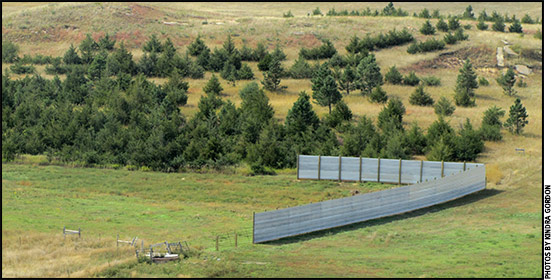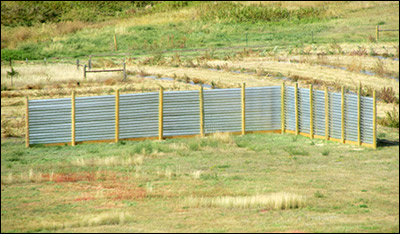
Equipment Essentials
This South Dakota couple has sold ranch supplies for 35 years; here they share their favorite products.
Gary and Amy Cammack have operated Cammack Ranch Supply near Union Center, S.D., for 35 years, so they are well-versed in knowing what equipment adds value to a ranch operation. The couple also operates a large, commercial cow herd and have incorporated many of their favorite equipment tools into their own operation.
What items wouldn’t they want to ranch without?
Topping the list is a bale processor. Gary explains that it cuts the hay in the bale shorter, so that cows will consume it more easily. He estimates it improves utilization of the bale by about 15%. In addition, there are fewer long stems on the ground, which Cammack has sometimes seen kill grass if too much waste is left.
It can also be a beneficial tool for conservation. On winter days with no wind, Cammack especially likes to use a bale processor to feed on ridge tops or areas with poor soils. This helps concentrate cow manure and plant litter from the bale in those areas to help build soil organic matter.
The Cammacks will also use the bale processor to feed over the top of a cow trail. Cammack explains, “Our home place is sandy soil, so when a cow trail develops and we process a bale over the top of it, the manure and bale nutrients get grass growing back in that area.”
Other favorites
Another favorite product that the Cammacks have used on their own ranch is secondary steel to construct V-shaped windbreaks in pastures. These structures have been placed near riparian areas and provide winter cover for both cattle and wildlife. Because of the shelter they provide, Cammack believes they’ve helped keep cattle from using and abusing the riparian areas.
The Cammacks are also proponents of rotational grazing; Gary calls this a “huge” part of their ranch success. Thus, materials for cross-fencing and installing water pipeline are on their list of ranch essentials. Cammack says rotational grazing has benefitted their grass production and beef production.
As one example of this, he explains that they previously calved in February. They now start calving about March 20, and they’ve maintained similar weaning weights. Cammack attributes some of that to the ability to provide fresh water and fresh pastures to the cattle.
He says, “I truly believe that makes the 50-pound (lb.) difference in calves, and I think that’s a conservative number.”

The final item on the Cammacks’ list of favorite ranch essentials isn’t something they sell at their ranch supply store, but it is something they’ve invested in heavily. It’s trees. On the windswept prairie of western South Dakota, the Cammacks have planted more than 30,000 trees through the last three decades.
Working with their local conservation district, they’ve planted willows and cottonwood shoots in wetland areas, and a variety of other tree species in shelterbelts around their ranch supply store, behind their metal V-shaped windbreaks, as well as around their farmstead and corrals to give extra protection. Cammack admits you give up acreage to establish trees, but he believes the return is worth it in the protection and habitat they provide for cattle, birds, deer, antelope and other wildlife.

Editor’s Note: Kindra Gordon is a freelancer and cattlewoman from Whitewood, S.D.





